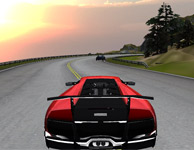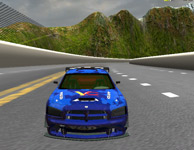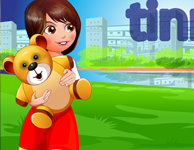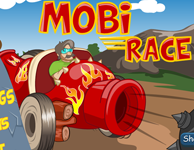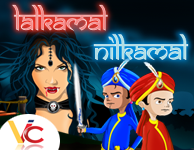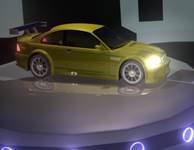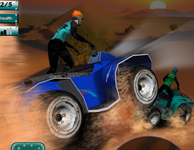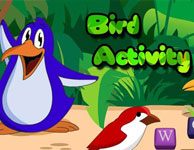- Complete Applied Animation
- Character Designer
- BG Animator
- Interior Decoration
- VFX
- Little Animator
- classical animation
- Game Design
- Game Development
- Mobile Applications
- Android Apps & Game Development
- iPhone App & iPad Application
- Social Media Game
- Comics Design
- Fashion Design
- Automobile Illustrations
- Graphic Design
- Illustrations
- Android Apps
- Joomla
- Web Design
- JAVA Training
- PHP Training
- SEO Training
- Developer Smart
- Shell Scripting
- Little Champ
- Digital Marketing Training
- Placement Record
- Students Work
Press News
- Outsourcing: Arijit Bhattacharyya, CEO of VirtualInfoCom
- Sillicon India The story of Arijit Bhattacharyya
- Entrepreneurial success story of Arijit Bhattacharyya
- Entrepreneurship in Bengal: A Blueprint for India’s Next Stage of Development
- virtualinfocom Creating Multiplatform Game Mahabharat
- Start Ups In Today’s Economy – Employment and Growth Factor
- About our Founder at Yourstory.in
- VirtualInfocom establishes game development club at Jaipur
- Game on - The Time of India 22 - 03 - 2010
- virtualinfocom gave franchisee at Jaipur
- Economic Times News ET Friday
- Virtualinfocom, Kolkata launches online animation tutorial 'Pencil2Pixels'
- Virtualinfocom, developing mytho games and comics on 'Ravana'
- Virtual Infocom in midst of developing resource portal for Inde game developers
- Virtualinfocom: Game Design Training Institute Launches New Portal for Collaboration
- virtualinfocom To release Indian Comics
Android Application Development & Game Programming
Game development on the Android platform is challenging and rewarding and comes with it's own set of pitfalls and hard learned lessons.
In this module you will learn how to combine Java and C code in an elegant manner by building a simple Java application on top of a native library. You will learn exciting concepts about the Java Native Interface (JNI) and the API used to combine Java and C in a single unit, including how to load native libraries, how to use the native keyword, how to generate the JNI headers, plus all about method signatures, Java arrays vs. C arrays, invoking Java methods, compiling and packing the product.
This Module deals with 3D graphics with OpenGL. It presents a neat trick I stumbled on by coincidence that allows for mixing OpenGL API calls in both Java and C. This concept is illustrated by using the 3D cubes sample provided by Google to demonstrate OpenGL in pure Java and hybrid modes. This trick could open a new frontier of 3D development for Android with the potential to bring a large number of 3D PC games to the platform with enormous savings in development costs and time.
In this module you will learn how to combine Java and C code in an elegant manner by building a simple Java application on top of a native library. You will learn exciting concepts about the Java Native Interface (JNI) and the API used to combine Java and C in a single unit, including how to load native libraries, how to use the native keyword, how to generate the JNI headers, plus all about method signatures, Java arrays vs. C arrays, invoking Java methods, compiling and packing the product.
This Module deals with 3D graphics with OpenGL. It presents a neat trick I stumbled on by coincidence that allows for mixing OpenGL API calls in both Java and C. This concept is illustrated by using the 3D cubes sample provided by Google to demonstrate OpenGL in pure Java and hybrid modes. This trick could open a new frontier of 3D development for Android with the potential to bring a large number of 3D PC games to the platform with enormous savings in development costs and time.
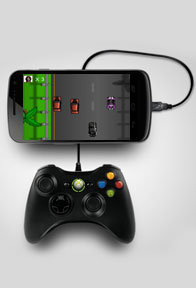
we are real game developers, click on each picture to play games : app store
Beta Phase Game
Introduction to Android:
- Installing Android
- Creating Hello World.
- Running on Emulator.
- Data types, Loops, Condition Operators.
Android Architecture and OOPS
- Building Blocks of Android
- Classes and Objects
- Class Methods and Instances
- Inheritance and Polymorphism in Java
- Interface and Abstract class
Android UI and Advance Java
- Using resources
- UI Design for Android games
- Game Art and Game Design on Android
- Using themes
- Debugging Android Code
- Settings
- I/O for Android
- Threads and Synchronization
- Environment Designer
- Eclipse Modeling Indigo
Android Graphics and Multimedia
- Basic Graphics
- Input Handling
- Adding Twitter to Android
- Playing Video and Audio
Persistence in Android
- Accessing Internal Files system
- Accessing SD cards
- Introduction to SQLite
- Data Binding
- Content Provider
- Eclipse Training
Multithreading
- Using Java Mutithreading classes
- AsyncTask
- Handler
- Post
Styles And Themes
- Creating and Applying simple Style
- Inheriting built-in Style and User defined style
- Using Styles as themes
Resources and Assets
- Android Resource
- Using resources in XML and code
- Localization
- Handling Runtime configuration changes
Intent, Intent Filters and Broadcast Receivers
- Role of filters
- Intent-matching rules
- Filters in your manifest
- Filters in dynamic Broadcast Receivers
- Creating Broadcast receiver
- Understanding Broadcast action, category and data
- Registering Broadcast receiver through code and through XML
- Sending Broadcast
Data Storage
- Shared Preferences
- Android File System
- Internal storage
- External storage
- IntroducingSQLite
- SQLiteOpenHelper and creating a database
- Opening and closing adatabase
- Working with cursors
- Network
Content Providers
- Accessing built in content providers
- Content provider MIME types
- Searching for content
- Adding, changing, and removing content
- Creating content provider
- Working with content files
Location Based Services and Google Maps
- Using Location Based Services
- Proximity alerts
- Working with Google Maps
Web Services and WebView
- Consuming web services
- Receiving HTTP Response (XML, JSON )
- Parsing JSON and XML
- Using WebView
Sensors
- How Sensors work
- Using Orientation and Accelerometer sensors
- Best practices for performance
Network Awareness
- Accessing the Internet
- Using Web services
- Using Java and Java Script
- Location Sensing
- Monitoring and managing Internet connectivity
- Managing active connections
- Managing WiFi networks
- Telephony Services
3D graphics in OpenGL and other views
- OpenGL Introduction
- Using Threads and Models
- Texture in OpenGL
- Making a application in OpenGL
- Other standard views in Android
- Rajawali ES2.0
Widgets and the way ahead
- Android Widget Development
- Flexible UI
- Running Application on device
- Android Market Some Do’s and Don’ts
- Introduction to System programming in Android
- Working with Fragmentaion
Live Project on Android
- Design and Requirement analysis support
- Implementation and QA support
Android Game Development
- Android System Overview
- Introduction to Android SDK
- Development Tools
- Hello Android: Your First Android program
- User Interface Elements
- Common Layout Objects
- Introduction to Gaming
- Maths revisited
- OpenGL Pipeline
- Viewing And Transformations
- API Feature
- Colors and Texturing
- Blending And Fog
- 2D game concepts
- 3D game concepts
- Jbox 2D
- Multiplayer Systems
- Game Engine Programming
- AI for Game Developers
- Game Testing Rules
- Live Game Development
Companies Hiring Our Students
- Mad rat Games
- Feature4u
- virtualinfocom
More Android game Programming School Information
- Contact Us: An admissions advisor is available to answer all of your questions. We would love to hear from you!
- Mail Me Info: Click to request exclusive mailings about your areas of interest.
- Apply Now: Applying is easy! Click to apply online, or to get information about other application options.

